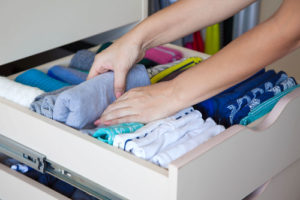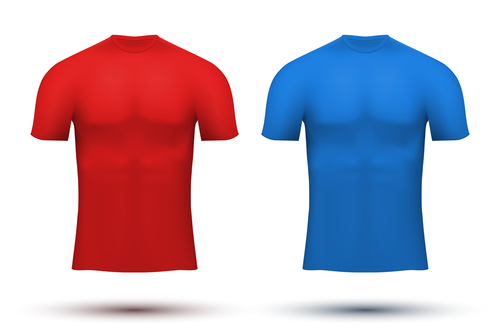Whether you are a marathon runner or you just enjoy a casual game of golf, moisture-wicking clothing is great. It is designed to collect the moisture that accumulates on the inside of your clothing with your sweat and transfer it to the outside of the clothing so it can evaporate more quickly and help you stay cool. Pretty amazing, right?
Moisture wicking shirts and other clothing items are lifesavers for many athletes, but like anything else, they aren’t perfect. The same fabric that works wonders for keeping sweat off of your body can also harbor bacteria and some pretty nasty odors. And getting rid of those problems isn’t quite as simple as throwing your smelly gear into the washer with some extra detergent and fabric softener. In fact, those products can actually damage the delicate high-tech fibers used to create your moisture-wicking clothing.
So, what can you do to keep your athletic gear smelling great without causing it to wear out prematurely? Here’s how to properly care for your moisture-wicking shirts and apparel.
Take Care of Dirty Workout Clothes Right Away
We get it. After an exhausting workout, it’s super tempting to leave your gym clothes balled up in the bottom of your bag or in your hamper with the rest of your clothes. Doing so, though, is a good way to facilitate the growth of odor-causing bacteria, mold and mildew.
Remove your moisture-wicking clothing as soon as you get home and rinse with cold water immediately. This helps remove all that nasty bacteria, so be thorough! If they are especially smelly, soak them in your sink in a mixture of one part vinegar to four parts white vinegar. After rinsing completely, throw them in the wash, if possible. If not, hang them up somewhere so they can dry.
Washing Moisture Wicking Shirts and Apparel
 Before you washing moisture wicking shirts or apparel, read the care instructions on the tag. These items need to be washed with care to avoid damage. They should always be washed separate from other clothing items – especially things like jeans and hoodies with zippers or buttons.
Before you washing moisture wicking shirts or apparel, read the care instructions on the tag. These items need to be washed with care to avoid damage. They should always be washed separate from other clothing items – especially things like jeans and hoodies with zippers or buttons.
Turning your athletic clothing inside out before putting it in the washer is highly recommended for a few reasons. For starters, the inside of your clothing is against your body, so it gets the dirtiest. Turning your gear inside out makes it easier for your washer to get rid of the grime. It also helps keep colors bright while protecting the outside of your clothing from damage. If something does get snagged a bit in the wash, the snag will be on the inside, so it’s less likely to be noticeable.
Wash your athletic gear using a gentle detergent and use a little bit less than usual. Skip the fabric softener, as it can get trapped in the fibers of the material and prevent the moisture-wicking properties from working like they should. To eliminate tough odors, add one cup of white vinegar and one tablespoon of baking soda to the washer.
Note that shirts and pants made from moisture wicking material should never be washed in hot water. It can damage the fibers and destroy the wicking properties. Only use cold water when washing your gym clothes to prevent damage.
Skip the Dryer
Whenever possible, it’s best not to use your dryer to dry your moisture wicking apparel. The heat is just too much for the delicate material to handle, and it can end up essentially burning off the fabric treatments that help wick sweat away from your body.
If you do use the dryer, use the lowest possible setting. Since moisture wicking clothes are designed to dry quickly, they’ll need a lot less time in the dryer than your other clothes, so check them regularly to avoid over drying.
Store Your Clothing Appropriately
 It’s important to take some care when storing your moisture wicking gear, too. Since most blank t shirts and leggings made from this type of material are stretchy, they shouldn’t be hung on hangers. The force of gravity pulling down can create annoying hanger marks or stretch your favorite leggings out and make them too long.
It’s important to take some care when storing your moisture wicking gear, too. Since most blank t shirts and leggings made from this type of material are stretchy, they shouldn’t be hung on hangers. The force of gravity pulling down can create annoying hanger marks or stretch your favorite leggings out and make them too long.
Ideally, workout gear should be folded neatly and kept in a drawer. Do not put your moisture-wicking items away until they are completely dry, though. Even a little bit of dampness can allow for the growth of odor-causing mold and mildew.
Moisture wicking shirts and apparel are must-haves for all types of athletes. By taking a few steps to properly care for your gear, you can extend each piece’s life so you can stay in the game.





